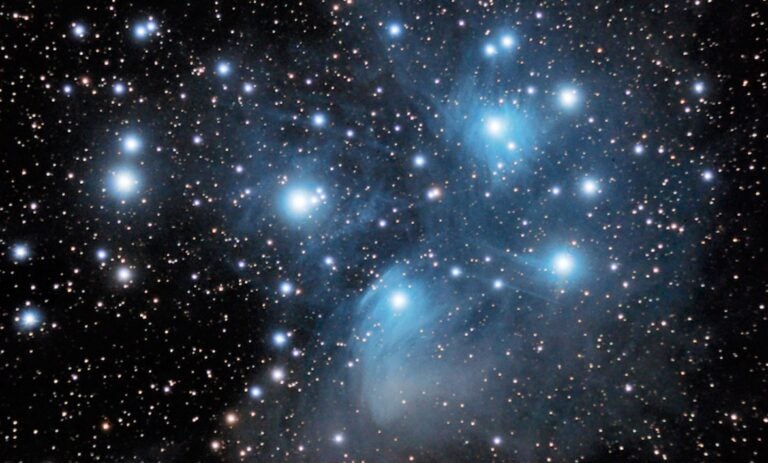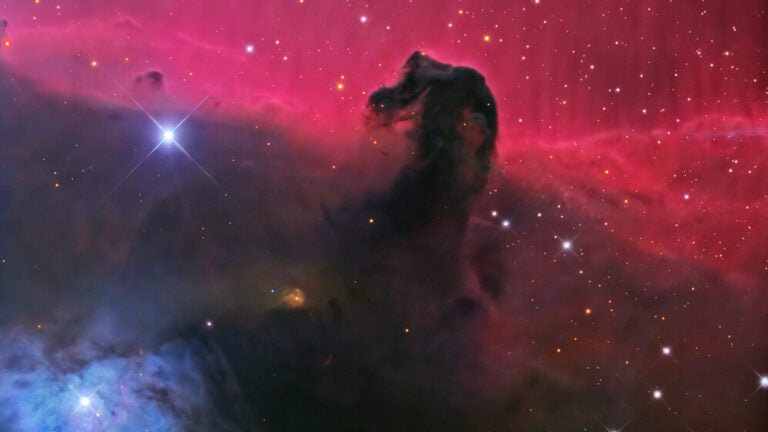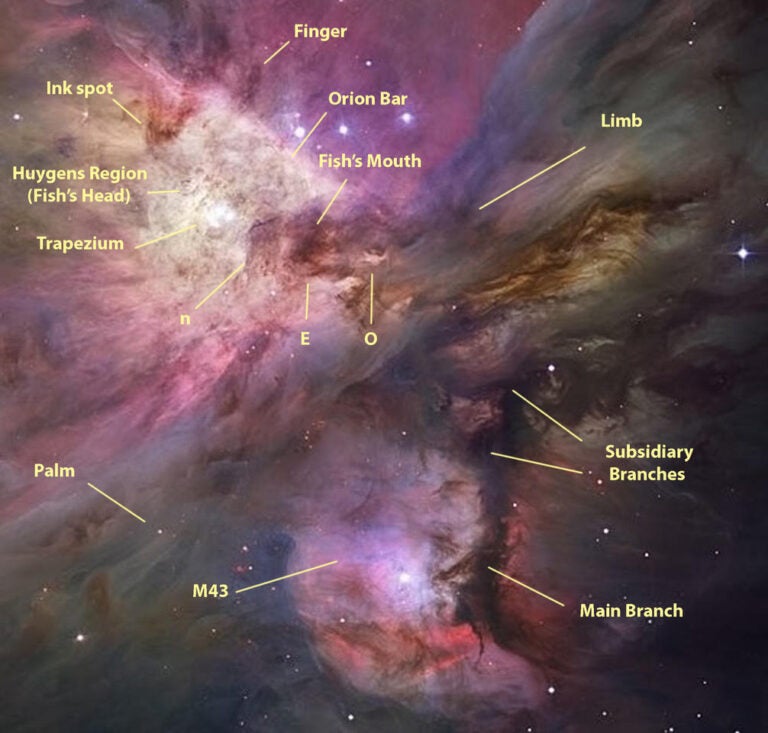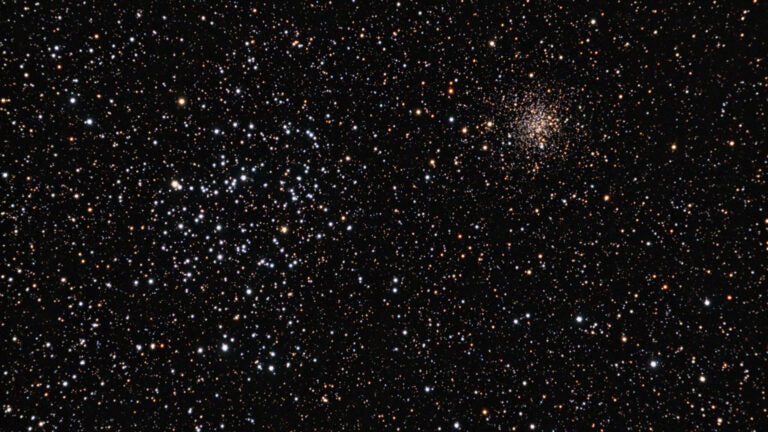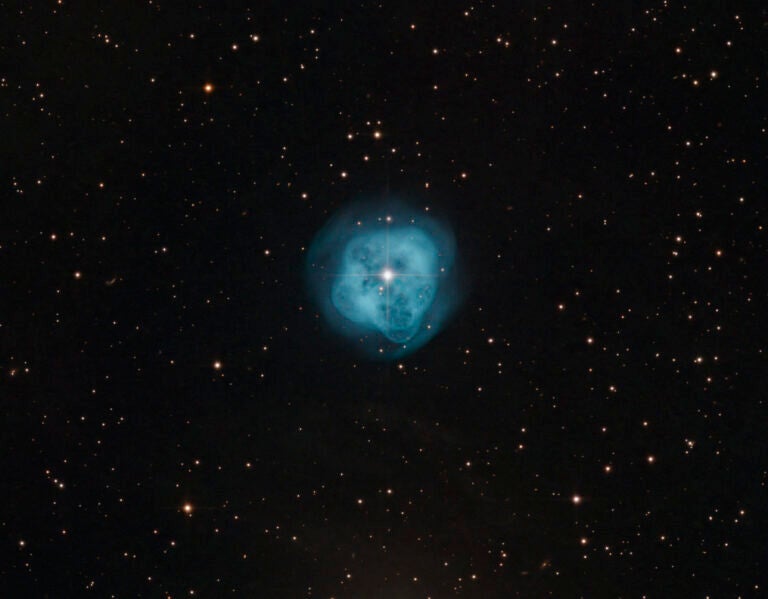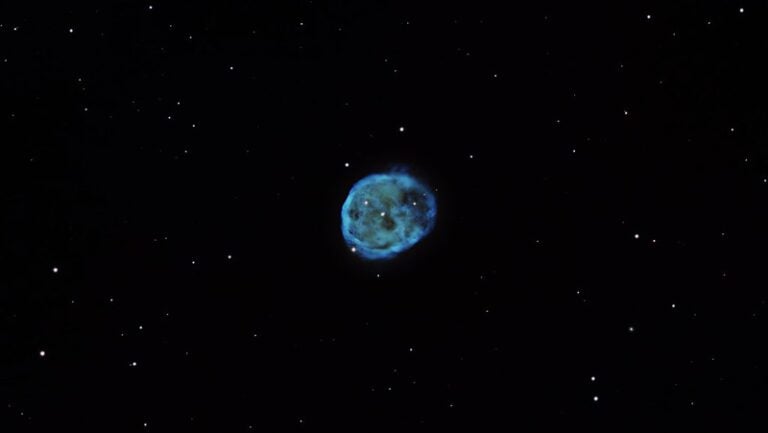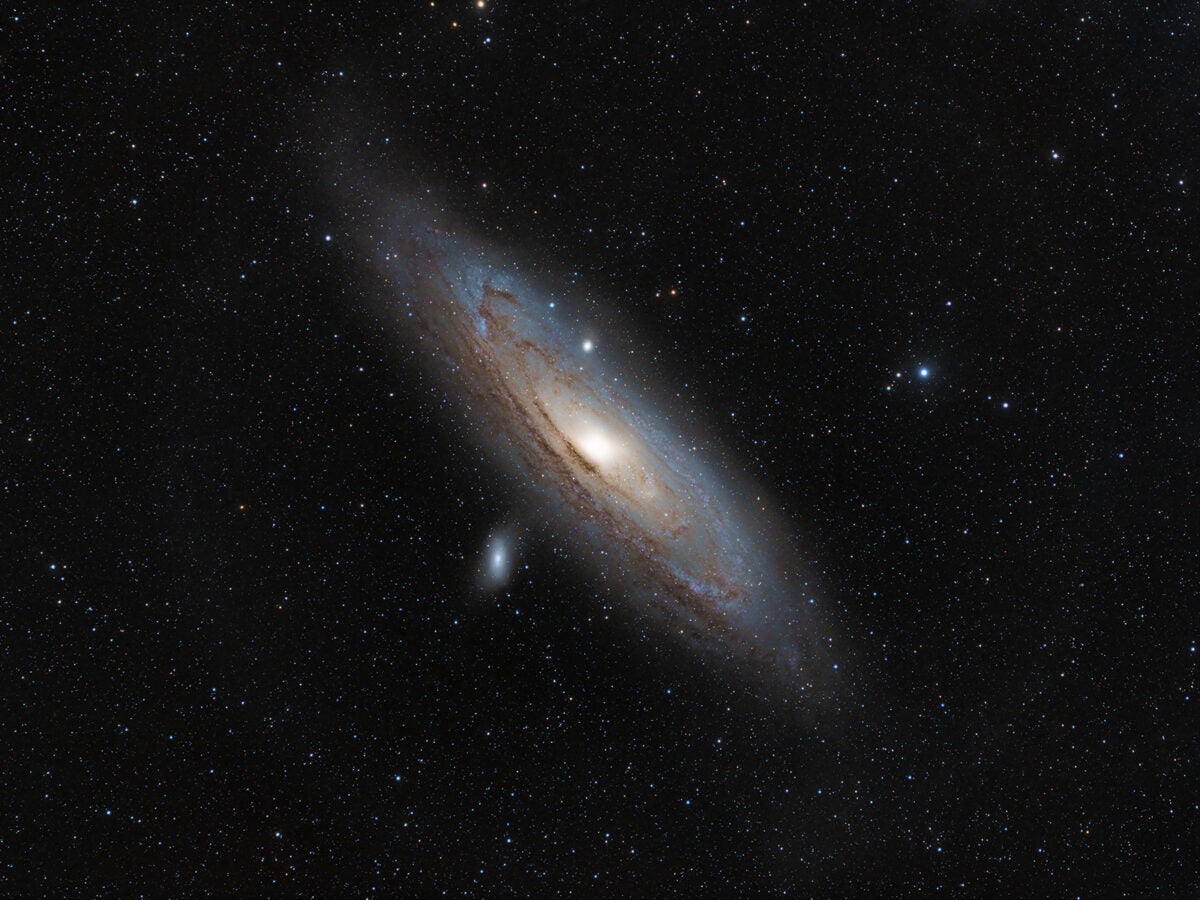
When amateur astronomers participate in star parties for the general public, the subject of distances in space always comes up. The immensity of our universe never fails to fascinate curious minds. But when it comes to truly grasping it — let alone explaining it — words and numbers often fall short.
It might be good, then, to have on hand a ready list of relatively bright objects outside the boundaries of the Milky Way — in other words, galaxies.
So, here I’m highlighting sets of three galaxies within five different distance ranges: up to 10 million light-years, between 10 million and 50 million light-years, between 50 million and 100 million light-years, between 100 million and 200 million light-years, and between 200 million and 500 million light-years. With these objects in mind, the next time you’re at a star party, not only will you be able to tell visitors how big the cosmos is, but you’ll be able to show them.
Nearby glory
Because most of our readers live north of the equator, my targets will have a northern bias. If, however, you’re in the Southern Hemisphere, you cannot do better for nearby galaxies than aim your scope at either of the Magellanic Clouds, the two standout satellite galaxies of the Milky Way.
From positive latitudes, first aim for the Andromeda Galaxy (M31). It lies 2.5 million light-years away and will show details through a scope of any size. You can use low power for an overall view. You’ll see M31’s nucleus, dust lanes, and its two large companion galaxies, M32 and NGC 205. See how much of the galaxy’s full length you can trace; that length equals six Full Moons side by side, and its width is two Full Moons (3° by 1°). Alternatively, you can try high power through a large scope — 300x or more, if your sky allows it. Concentrate on M31’s spiral arms and look for bright clumps, which indicate star-forming regions.
The second target is the Southern Cigar Galaxy (NGC 55) in Sculptor, another close one you can point out. It lies some 6.5 million light-years away. Its common name comes from its core being offset to the west, which gives it a tapered, cigarlike appearance at low power. Look closely for the faint dark lanes that divide the arms. Through an 11-inch scope, try using an Oxygen-III filter. Because NGC 55 is big and bright, the filter will dim its stars and better reveal the star-forming regions of ionized hydrogen along the galaxy’s arms. Few other galaxies benefit from this trick.
Our third nearby galaxy is NGC 2403, which you’ll find in the faint northern constellation Camelopardalis the Giraffe. It lies just within our first distance limit, 9.7 million light-years away. Although its magnitude is 8.2, that brightness is spread over an area 23′ by 12′ (36 percent as large as that of the Full Moon), so its surface brightness is low. Small telescopes show this object as an indistinct haze roughly twice as long as it is wide, with a bright central region. Look for loose open star clusters in NGC 2403’s spiral arms, which confirm that stars are still forming in this galaxy.
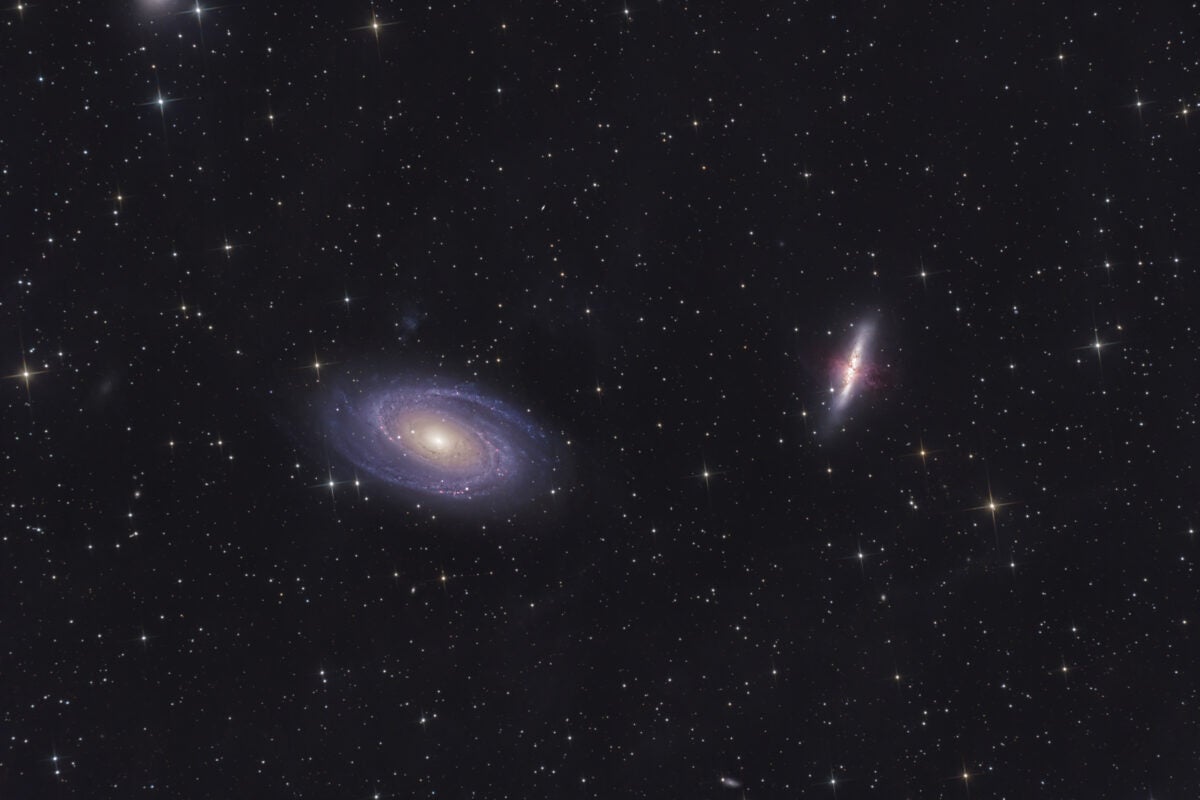
A bit farther out
Although no northern galaxy can compete with M31, there are some standouts as we move out to the 10-million- to 50-million-light-year range. Our first target is the wonderful pair of Bode’s Galaxy (M81) and the Cigar Galaxy (M82) in Ursa Major. Both lie some 12 million light-years away. At magnitude 6.9, most observers can spot M81 through binoculars. Its details, however, really emerge through medium-size and larger telescopes. An 8-inch will let you see a small bright core surrounded by a larger, less bright region. M82 offers a great contrast to its neighbor. While M81 is a classic spiral, the Cigar Galaxy is one of the best examples of a starburst galaxy — one where a higher-than-normal amount of star formation is happening. Its higher surface brightness makes it appear about as bright as M81, even though it shines 1.5 magnitudes fainter.
Doubling our distance to 24 million light-years brings us to the magnificent Whirlpool Galaxy (M51) in Canes Venatici. This is actually a double object, combining the larger NGC 5194 with the smaller NGC 5195. An 8-inch scope will show the spiral arms, a few dust lanes, and the much brighter core of NGC 5195.
Our third object in this range is the Southern Pinwheel Galaxy (M83), the third galaxy ever discovered (after the Andromeda Galaxy and its companion M32). M83 is a barred spiral some 15 million light-years away in Hydra. The bar is easy to spot, and through 11-inch and larger scopes you’ll see star-forming clumps within the galaxy’s arms.
Midrange wonders
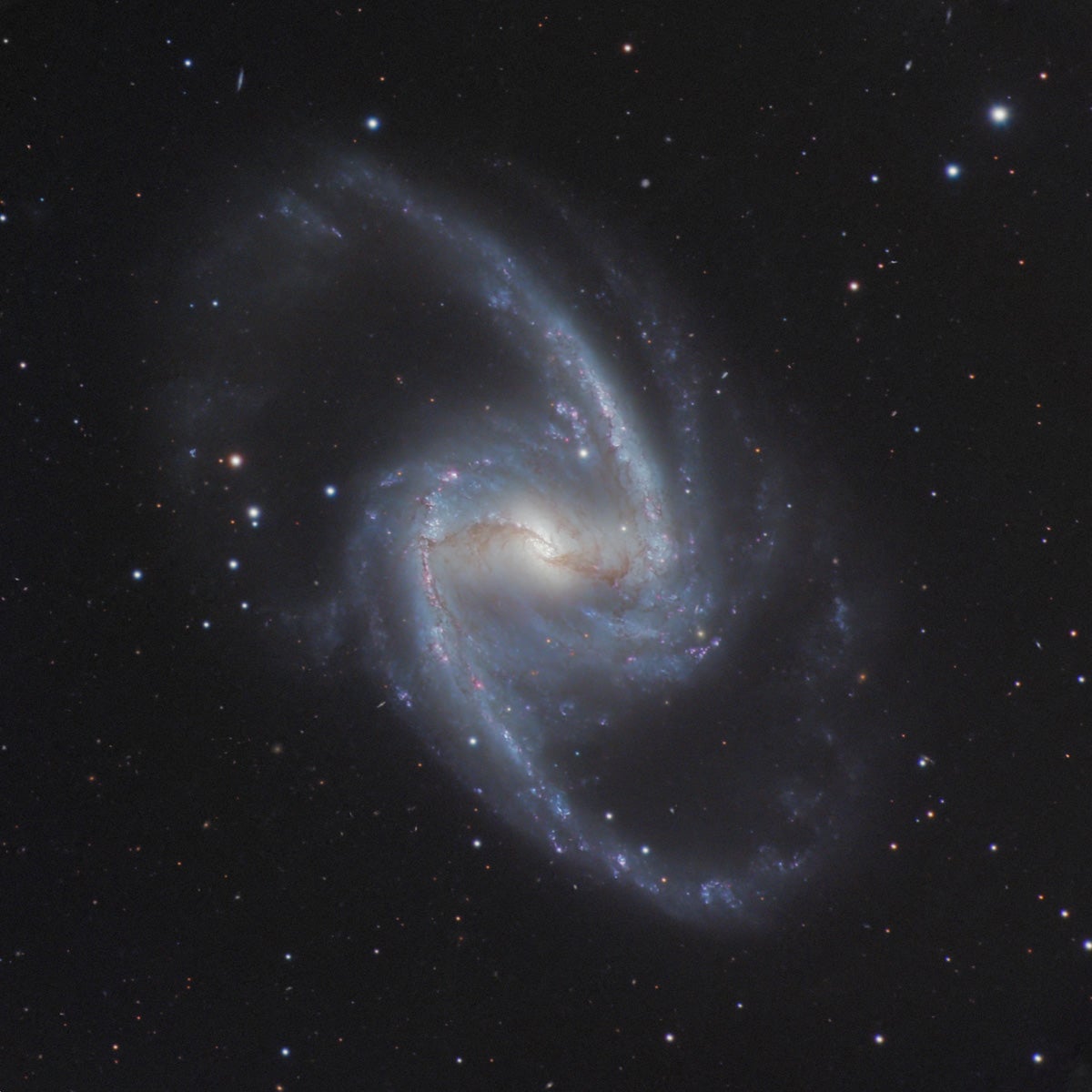
If you look out into space some 55 million light-years, you’ll encounter the Mirror Galaxy (M100) in Coma Berenices. View it through a medium-size scope at low power and you’ll see a hazy glow measuring 6′ by 5′. To identify the spiral arms, however, you have to crank the power past 200x. Astronomers classify M100 as a starburst galaxy.
Our next target, NGC 1300, lies some 60 million light-years away in Eridanus. This is a classic barred spiral that observers never tire of showing to others. Its arms originate at the ends of the bar and tightly curve back around the galaxy’s center. Use high magnification for best results.
The third object in this range is the barred spiral NGC 1365 in Fornax, lying less than 20° from NGC 1300. It’s 75 million light-years away and makes a great target for medium-size scopes. Even a 4-inch will reveal the bar and bright core, but you’ll need at least an 8-inch to see the arms. If you move up to a 16-inch scope at high power, you’ll see the small inner bar, which is tilted about 45° from the main bar.
Ever farther
Our first target in the fourth distance range sits right at its lower limit, 100 million light-years away. It’s the flocculent spiral NGC 5676 in Boötes. Flocculent galaxies have a soft or fluffy appearance and no bar. Because of its high surface brightness, NGC 5676 is visible through a 6-inch scope as a grayish rectangle.
A bit farther out — around 125 million light-years away — is NGC 2906, a spiral in Leo. NGC 2906’s coolest attribute is that it’s tilted roughly 75° to our line of sight. To see its arms circling a brighter core requires an 8-inch scope; 11-inch and larger instruments will help you spot a few of the clumps along the arms, which mark regions of star formation.
My third pick in this range is the face-on spiral NGC 1376, which lies around 195 million light-years away in Eridanus. And, full disclosure, we’re getting to objects at distances that require large telescopes to reveal details in them. German-born English astronomer William Herschel discovered this one in 1785 through his 18.7-inch reflector. On a night with great seeing (atmospheric stability), use at least an 11-inch scope and magnifications of 300x and above to see the faint arms encircling the slightly brighter nucleus. And don’t forget to mention that the light from this galaxy started on its journey toward Earth around the beginning of the Jurassic Period.
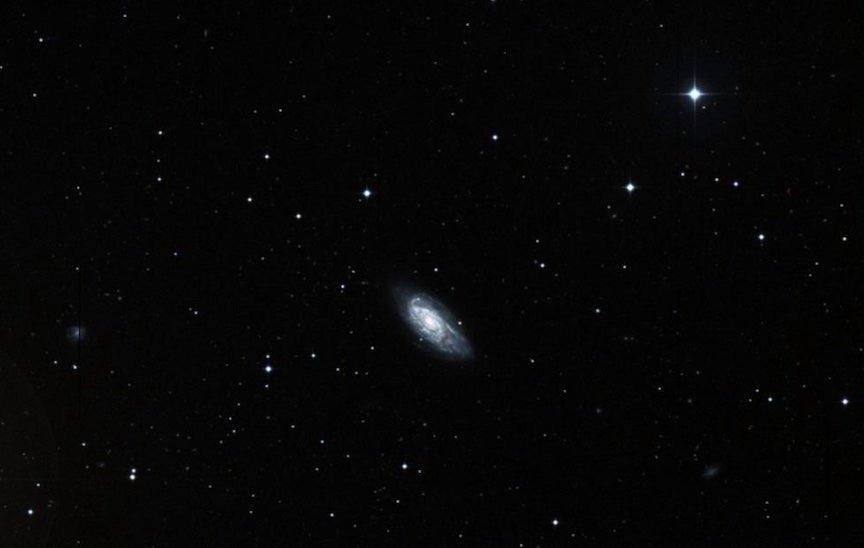
The edge of space …
… OK, not really. But now we’ve reached distances where it’s difficult for amateurs to see details in individual galaxies. That said, it’s worth taking a look at the irregular galaxy NGC 6745 in Lyra. It lies 210 million light-years away and is the result of a collision of three galaxies. Because of its high surface brightness, amateurs routinely spot it through medium-size scopes. One detail you can see through large instruments is its odd shape: a normal eastern edge but a straight western one, due to the ongoing collision.
Much farther out is a grouping of five galaxies that make up Stephan’s Quintet — kind of. Four of the galaxies — NGC 7317, 7318A, 7318B, and 7319 (comprising Hickson Compact Group 92) lie some 290 million light-years away. The fifth, NGC 7320, lies “only” 40 million light-years distant. But all five are lined up from our point of view, so observers usually refer to them as a quintet. Although you can see Stephan’s Quintet through a 6-inch scope, a magnification of 50x will show you only a faint, clumpy glow 3′ across. An 11-inch telescope, on the other hand, lets you identify the individual members.
Our final target, the Hercules Galaxy Cluster (Abell 2151), takes deep-sky observing to a whole new level. This cluster of some 200 members lies at the limit of our final distance range, 500 million light-years away. No amateur telescope could hope to reveal all the galaxies, but a few of the brightest — namely NGC 6041, NGC 6047, and NGC 6061 — are visible on the best nights through 16-inch and larger scopes.
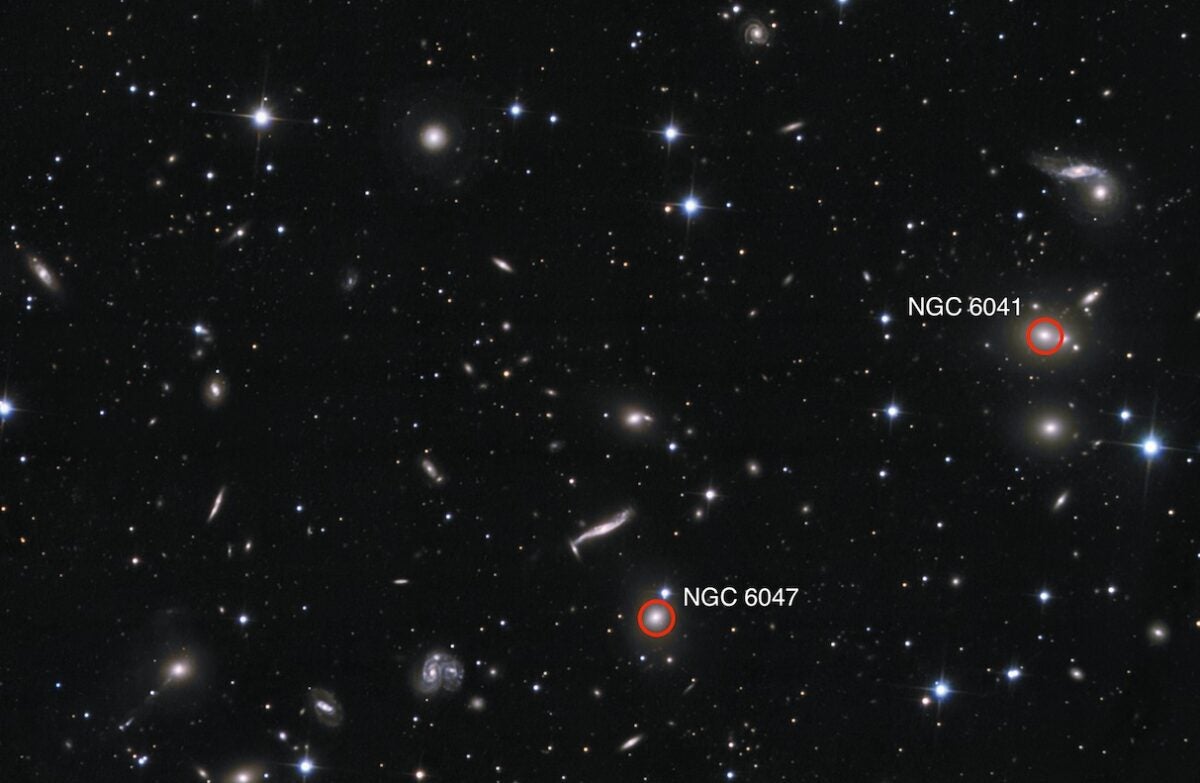
A parting thought
Distances in our universe correspond directly to time. How far an object is from us in light-years tells us how long its light — traveling at 186,282 miles (299,792,458 meters) per second — has taken to reach us. That means the photons from the farthest galaxy on this list have been traveling for roughly 4 percent of the universe’s current age.
Humans think the Moon is far away and, compared to distances on Earth, it is. Galaxies lie at vastly greater distances. But as you can see by this list, there are different levels of “vast.” It’s mind-blowing to think that the final object on our list, the Hercules Galaxy Cluster, lies 200 times as far as target No. 1, the Andromeda Galaxy, which itself lies more than 61 trillion times as far as the Moon.
Yes, we live in a big universe. Go out sometime soon and get somebody excited about it.
Our universe at a glance


Left to right: Ron Brecher; Daniel Verschatse; Massimo Di Fusco; Georgii Konkov; Behyar Bakhshandeh; Bob Fera; Sergey Trudolyubov; Bill Snyder Adam Block/Mount Lemmon SkyCenter/University of Arizona; Dan Crowson; Digitized Sky Survey; Digitized Sky Survey; Digitized Sky Survey; Digitized Sky Survey; Sergey Trudolyubov; Ken Crawford

